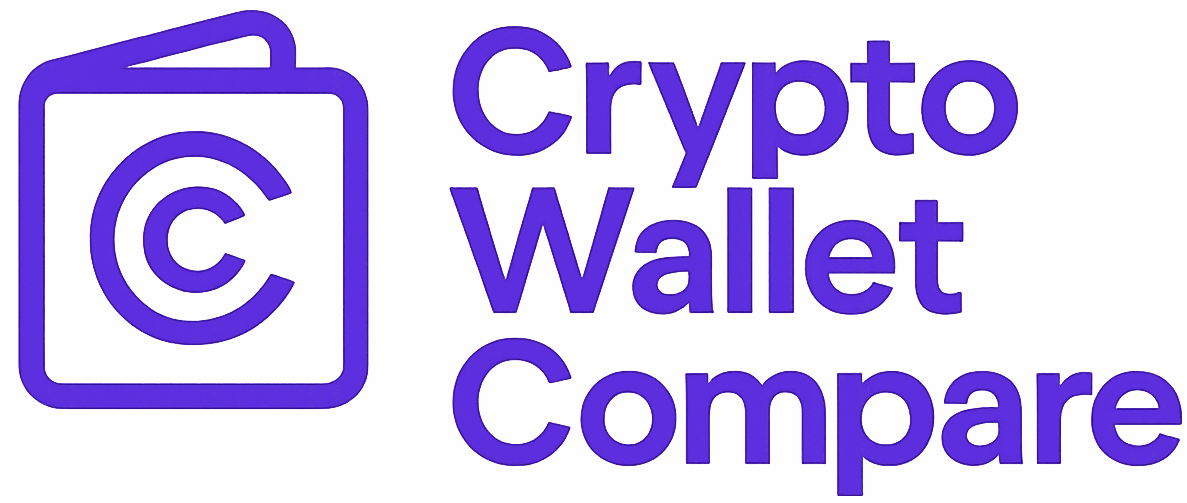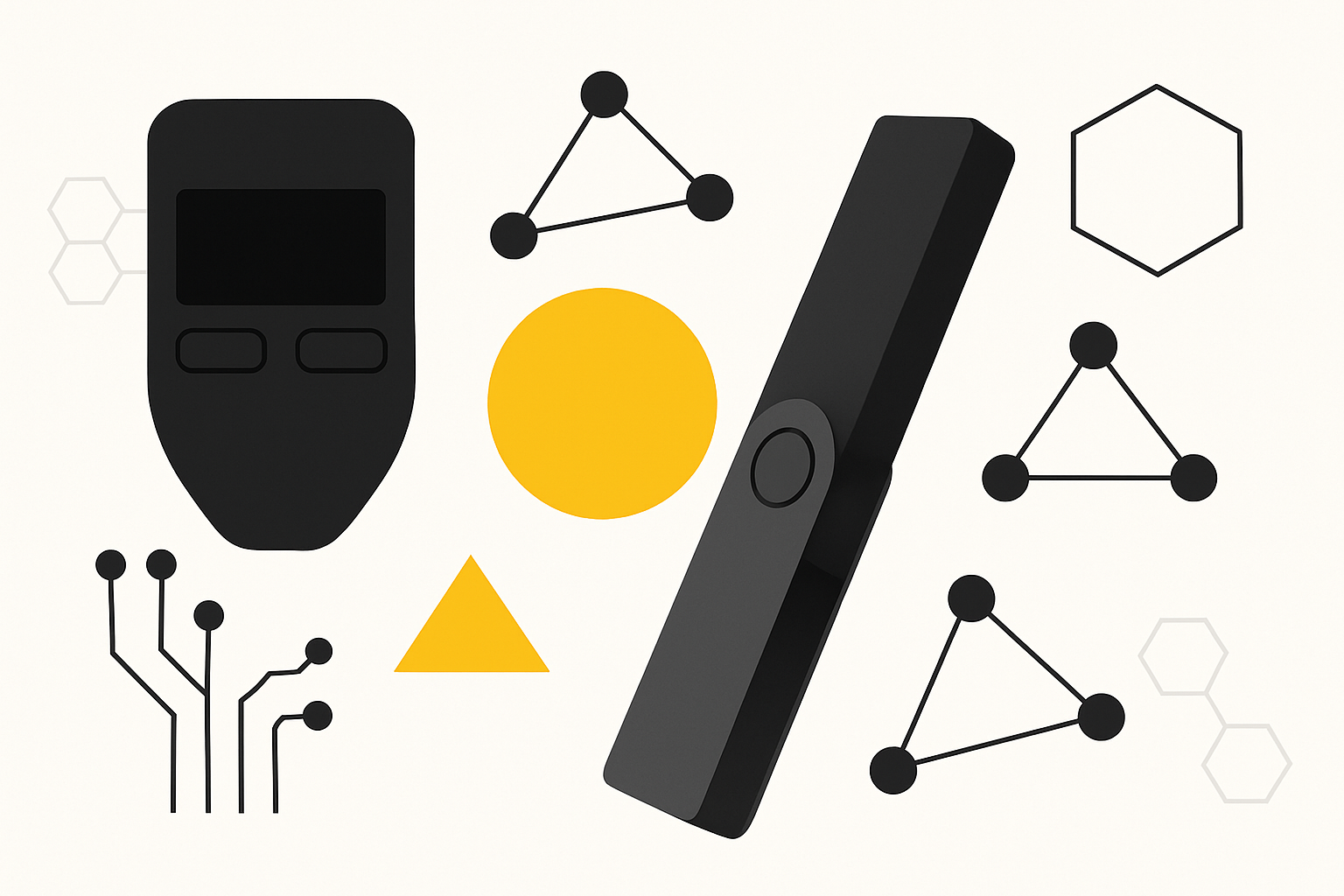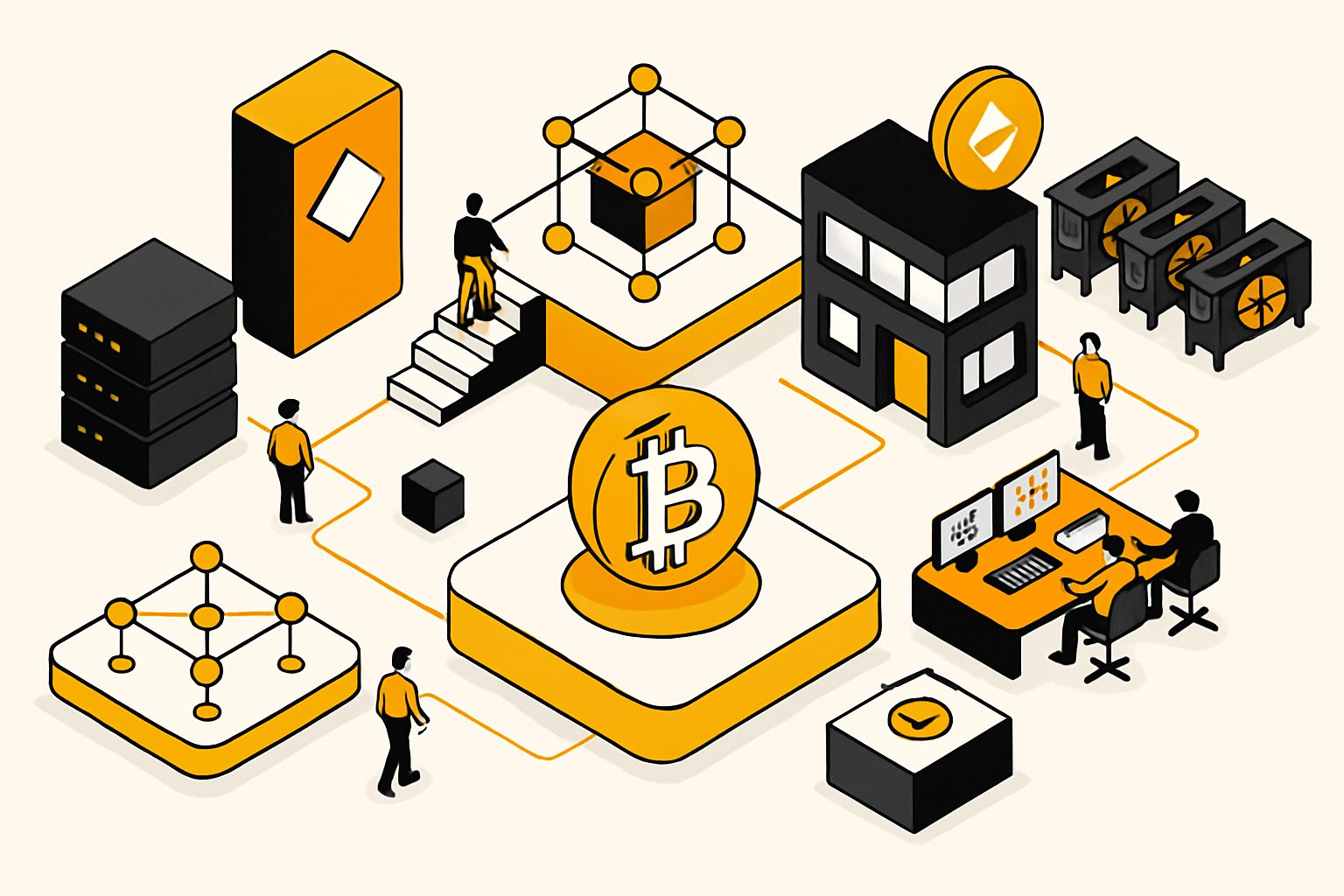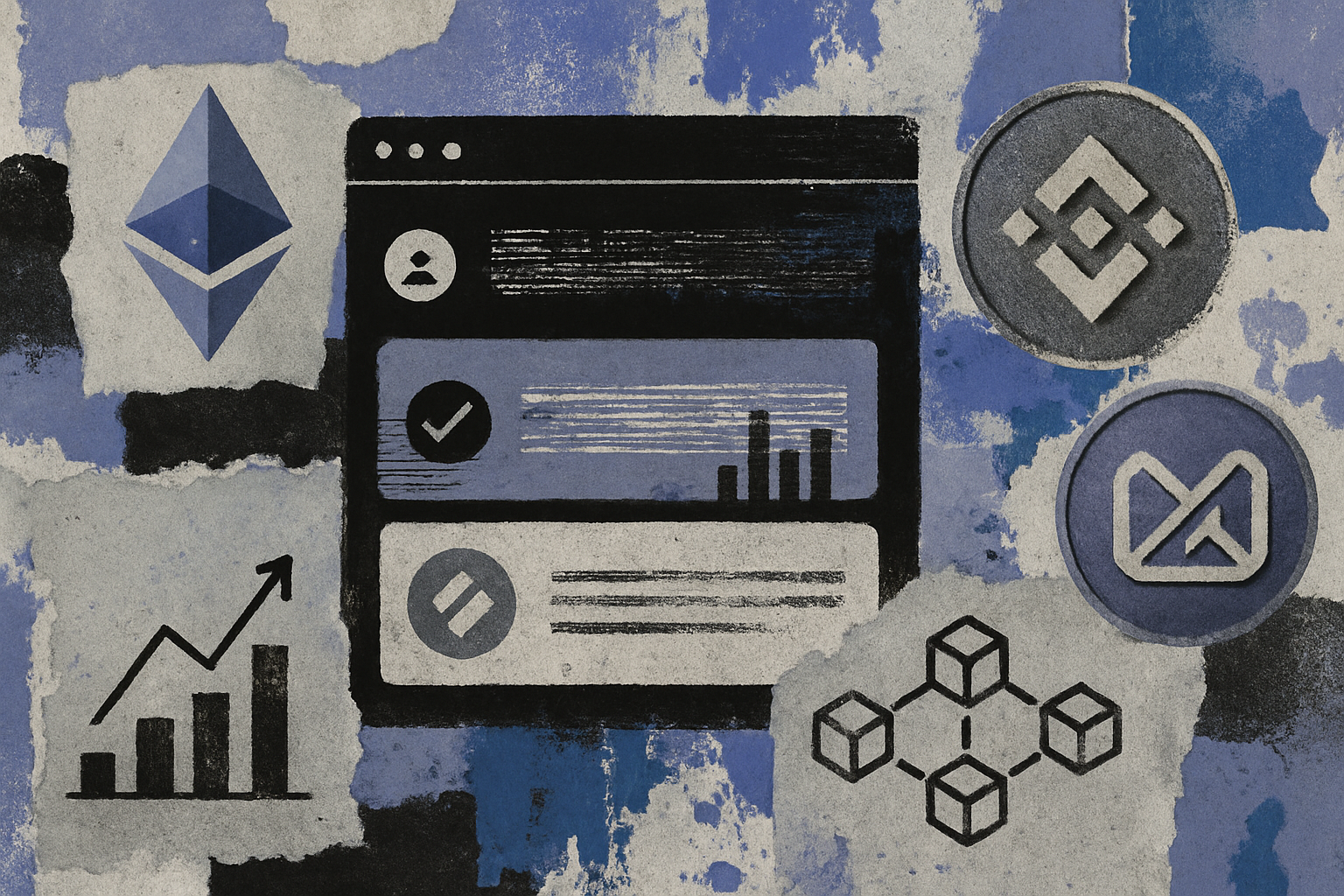The crypto wallet landscape in 2025 is more competitive than ever, with Binance Wallet and OKX Wallet standing out as two of the most comprehensive options on the market. As both platforms continue to evolve, users are increasingly focused on features, visual design, and user experience when choosing the right wallet. In this head-to-head crypto wallet comparison for 2025, we break down how each stacks up in real-world use, from UI smoothness to multi-chain support and security technology.

Visual Design and User Experience: Where Usability Meets Power
Design isn’t just about aesthetics – it shapes every interaction you have with your crypto assets. Both wallets have prioritized a clean interface, but their approaches diverge:
- OKX Wallet: Praised for its intuitive layout and rapid response times, OKX Wallet makes onboarding painless for newcomers while still offering advanced tools for pros. Its unified experience across web and mobile ensures consistency. Customizable themes let users personalize their dashboard – a small but meaningful touch that boosts engagement.
- Binance Wallet: Integrated within the broader Binance App, the wallet inherits Binance’s signature look: minimalist icons, clear labeling, and step-by-step tutorials for first-timers. However, access requires an extra tap via the “Funds” section – a minor friction point compared to OKX’s direct access from the main nav. Recent updates have ironed out early bugs like language mismatches and lagging pages.
If you’re looking for a wallet that balances simplicity with depth, both deliver – but OKX edges ahead in sheer ease-of-use for non-technical users.
Multi-Chain Superpowers: Asset Diversity at Your Fingertips
Multi-chain support is now table stakes for any serious crypto wallet. The difference lies in breadth:
- OKX Wallet: Supports over 100 blockchain networks, covering both EVM-compatible chains (like Ethereum) and non-EVM giants (such as Bitcoin and Solana). This means you can manage everything from ERC-20 tokens to native BTC without juggling multiple apps.
- Binance Wallet: Has expanded aggressively since launch; as of late 2025 it supports around 35 public chains, plus seamless integration with more than 100 DApps. Crucially, it now also covers non-EVM chains like Solana and Bitcoin – closing much of the previous gap with OKX.
If your portfolio spans dozens of networks or obscure altcoins, OKX’s wider net gives it an edge. For most mainstream users though, Binance’s recent upgrades mean you won’t feel left behind.
Key Feature Differences: Binance Wallet vs OKX Wallet (2025)
-
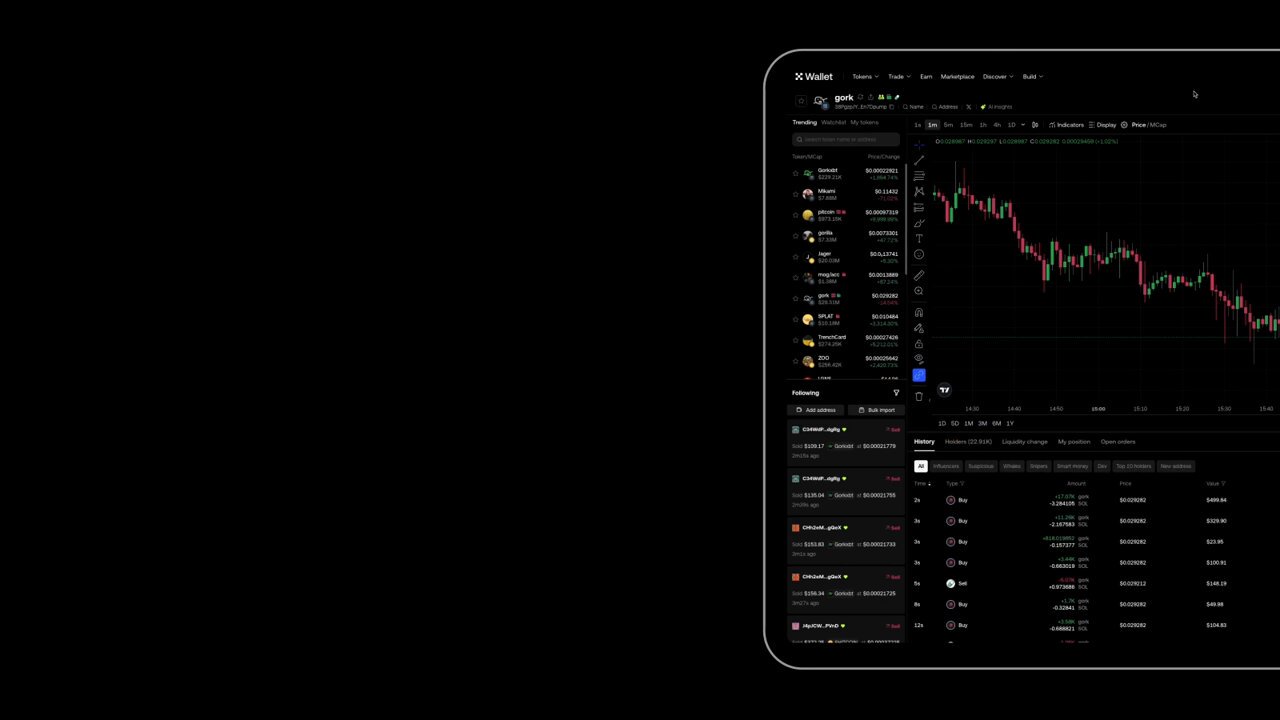
User Interface & Experience: OKX Wallet offers a highly intuitive, unified interface across mobile and web, with customizable themes and rapid transaction speeds. Binance Wallet is integrated into the Binance App, providing a consistent UI with beginner-friendly tutorials, but requires extra navigation steps to access the wallet.
-
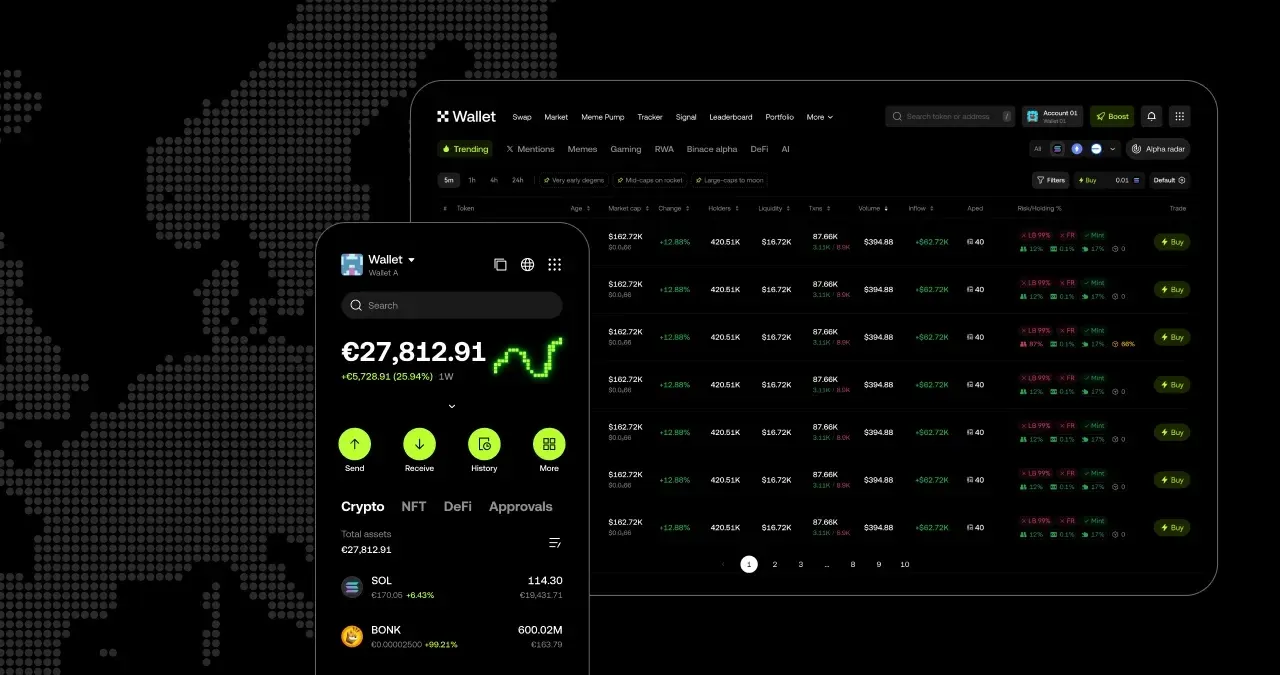
Multi-Chain Support: OKX Wallet supports over 100 blockchain networks, including both EVM and non-EVM chains like Bitcoin and Solana. Binance Wallet now supports around 35 public chains and has expanded to include Solana and Bitcoin, enhancing its cross-chain versatility.
-
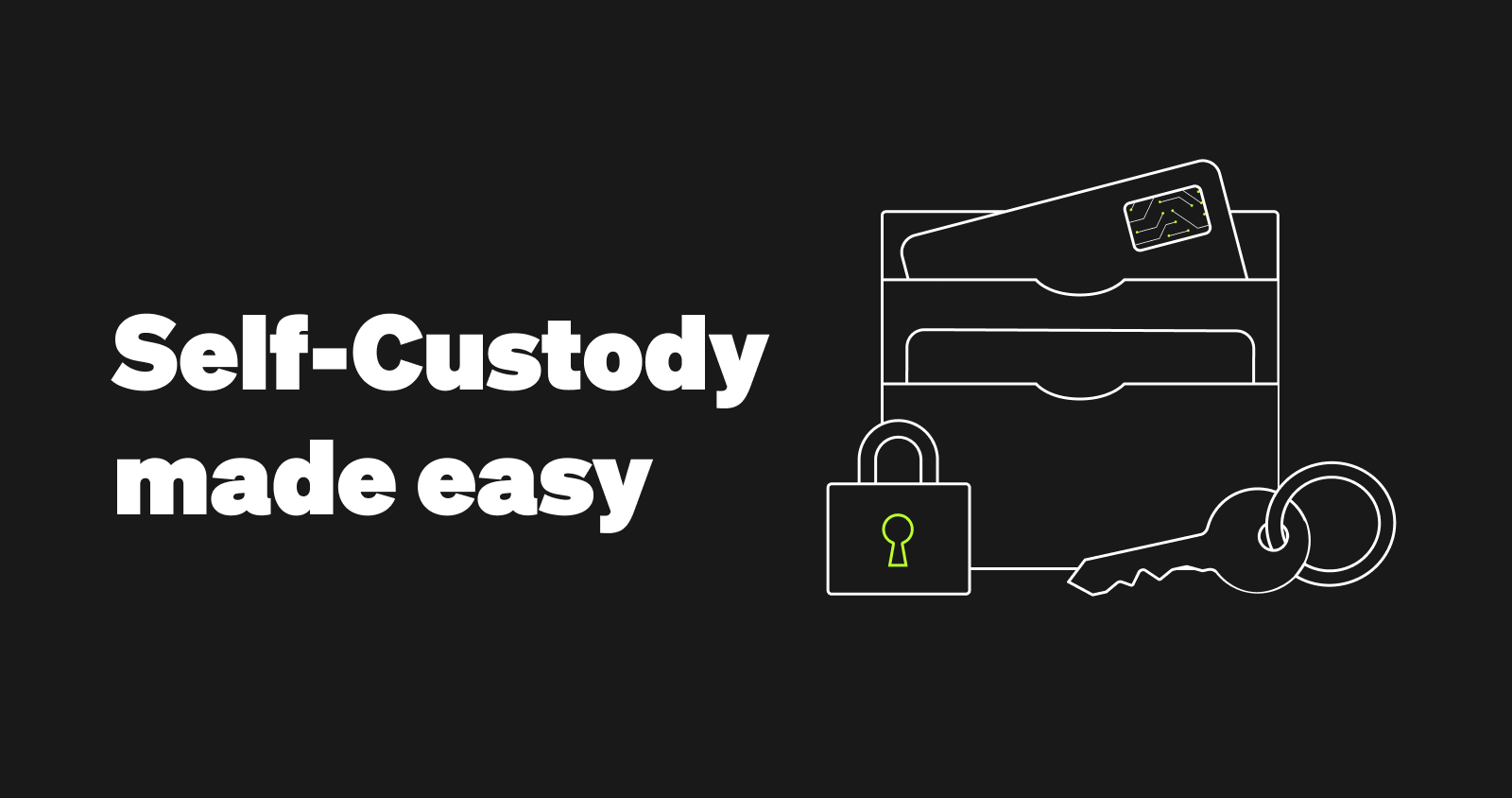
Security Mechanisms: OKX Wallet utilizes Multi-Party Computation (MPC) technology, splitting private keys for enhanced security. Binance Wallet relies on traditional key management, with added layers like multi-signature wallets and robust authentication within the Binance ecosystem.
-
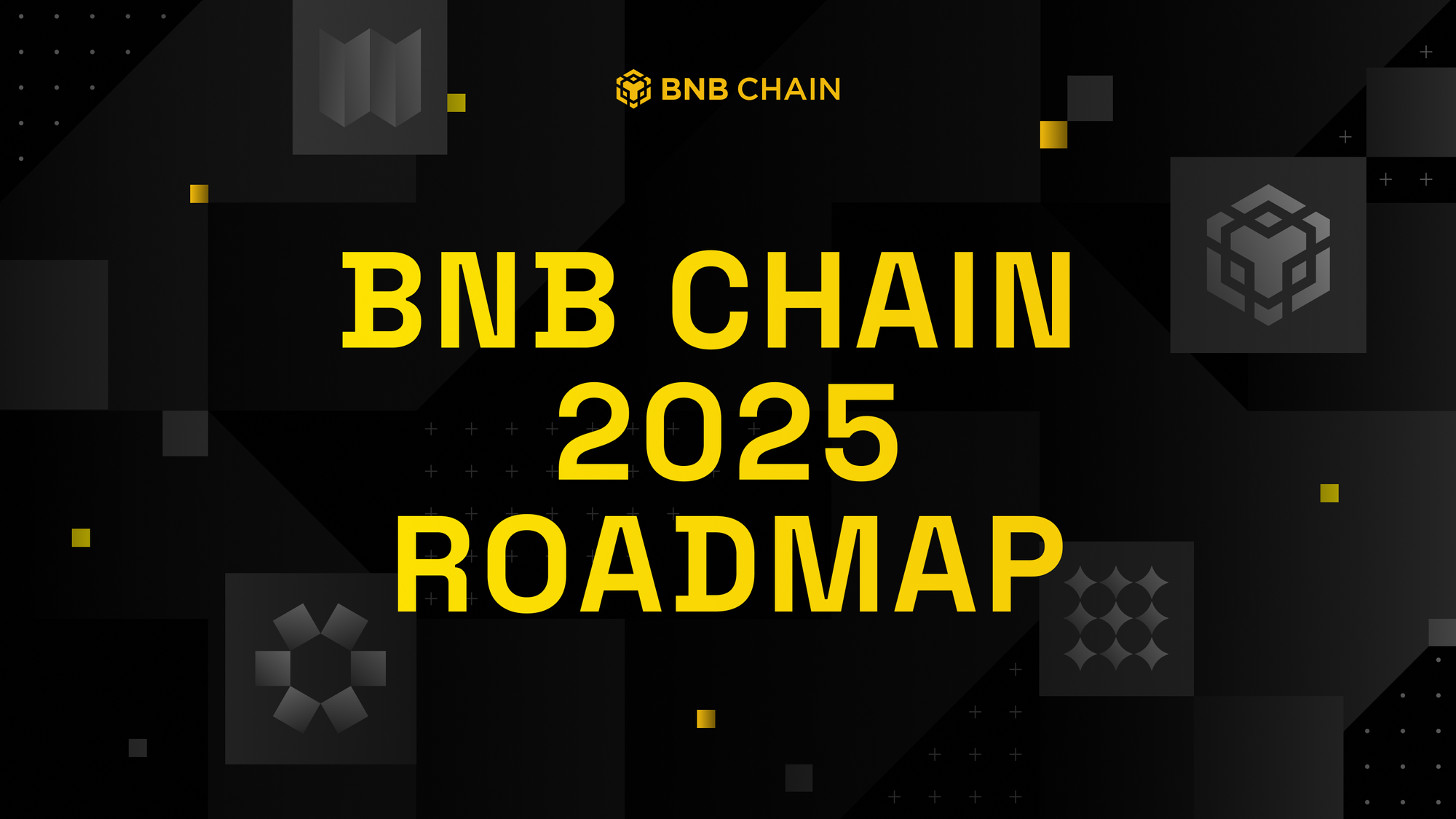
Ecosystem Integration: OKX Wallet features a built-in DEX aggregator, direct staking, DeFi yields, and NFT management. Binance Wallet is tightly integrated with the Binance ecosystem, enabling seamless access to spot trading, derivatives, staking, and the NFT marketplace from within the app.
-
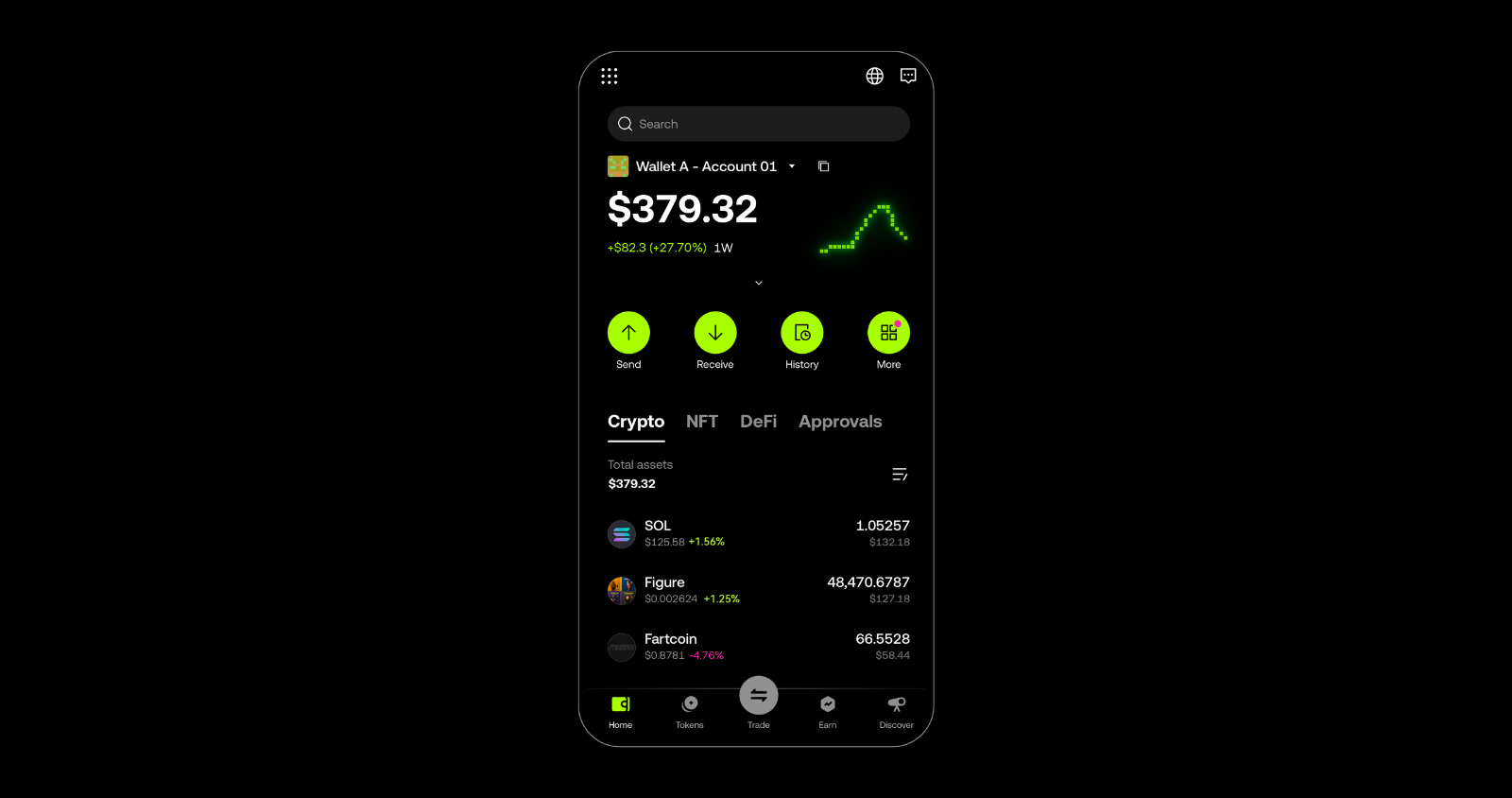
Web3 Experience: OKX Wallet provides a comprehensive Web3 experience with access to over 500 DEXs and a wide range of DeFi and NFT tools. Binance Wallet focuses on bridging centralized and decentralized finance, offering a cohesive platform for both CEX and DeFi activities.
Security Architecture: MPC vs Traditional Models
No feature matters if your funds aren’t safe. Here’s how each wallet approaches security in 2025:
- OKX Wallet: Implements Multi-Party Computation (MPC), splitting private keys into separate shards stored across different devices or servers. This dramatically reduces single-point-of-failure risk; even if one shard is compromised, attackers can’t access your funds without the others.
- Binance Wallet: Leverages traditional key management enhanced by integration within Binance’s fortress-like ecosystem. Multi-sig wallets and robust authentication protocols add layers of protection – but without MPC’s distributed trust model.
MPC technology is becoming a gold standard among non-custodial wallets; if you’re especially risk-averse or hold significant value on-chain, this distinction could be decisive.
Ecosystem Integration and Web3 Access
The best wallets do more than store coins – they unlock new opportunities across DeFi, NFTs, and staking:
- OKX Wallet: Features a built-in DEX aggregator pulling liquidity from over 500 decentralized exchanges. Staking protocols and NFT management are accessible directly inside the app for a seamless Web3 experience.
- Binance Wallet: Tightly coupled with the full suite of Binance services including spot trading, derivatives markets, staking products, and NFT marketplace access all within one app environment.
Your choice may come down to whether you want maximum DeFi/NFT flexibility (OKX) or prefer an all-in-one portal tightly linked to centralized exchange features (Binance). For deeper technical breakdowns or visual guides on these ecosystems see our dedicated resource at Binance vs OKX Visual Guide.
Beyond the headline features, subtle differences in daily usability can tip the scales for discerning users. For example, OKX Wallet’s direct-from-home access and customizable dashboard streamline routine transactions and portfolio checks. Meanwhile, Binance Wallet’s integration with its exchange means fewer logins and a unified balance view if you’re already deep in the Binance ecosystem.
User Reviews and Community Sentiment
Real-world feedback remains a crucial metric. On Capterra and other review aggregators, both wallets score highly for reliability and support. However, OKX Wallet garners praise for its rapid issue resolution and responsive customer service. Binance Wallet’s support is robust but sometimes slower during peak market volatility, likely a function of its massive global user base.
Community forums highlight that advanced users appreciate OKX’s granular network fee controls and DEX aggregator, while Binance loyalists value smooth fiat onramps and the ability to toggle between centralized exchange and wallet activities without leaving the app.
Who Should Choose Which?
Your optimal choice hinges on your crypto habits:
Who Should Use Binance Wallet vs OKX Wallet?
-
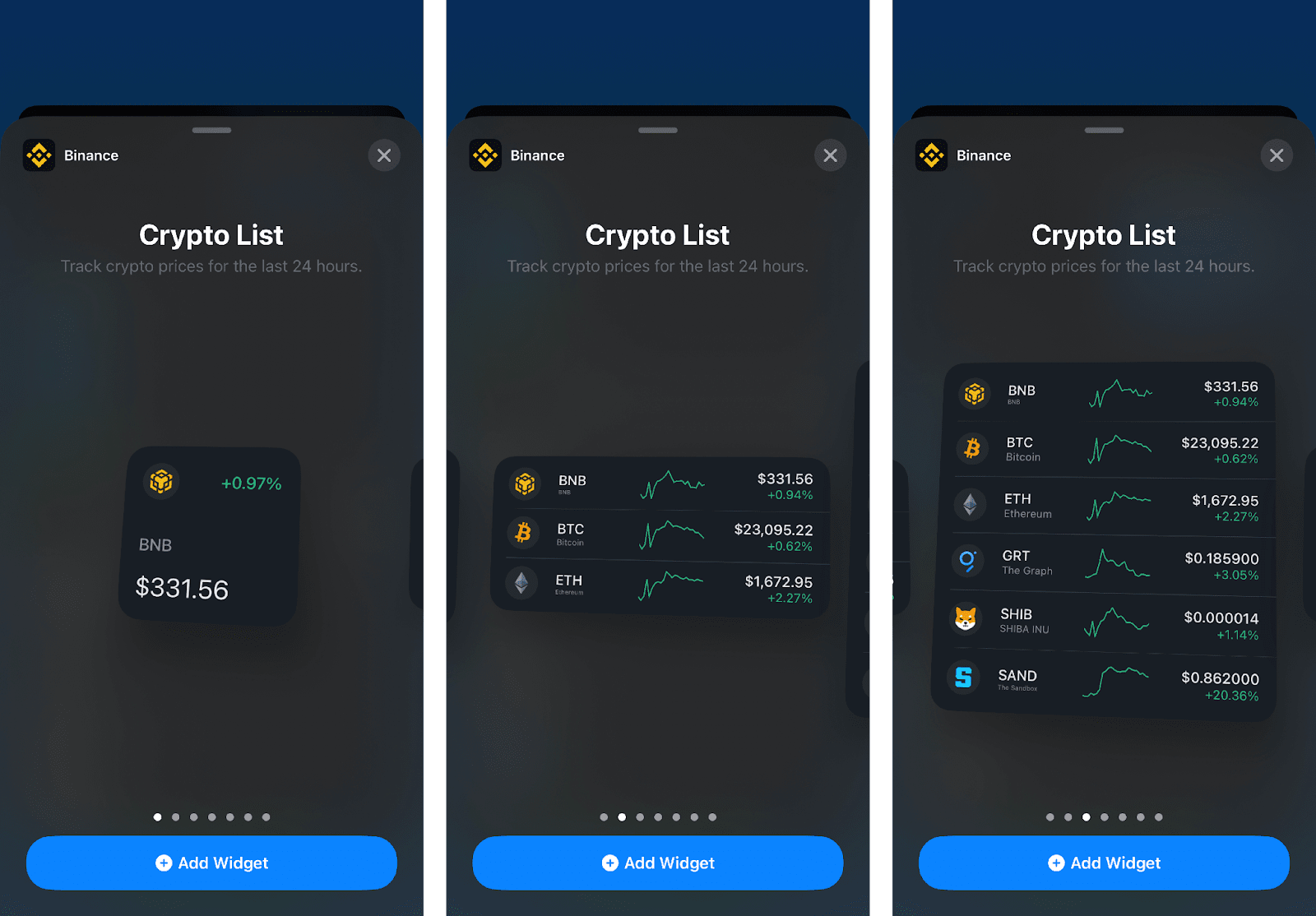
Beginner Crypto Users: Best suited for Binance Wallet. Binance Wallet offers step-by-step tutorials, a simple interface, and seamless integration with the Binance App, making it ideal for newcomers who value guided onboarding and a familiar ecosystem.
-
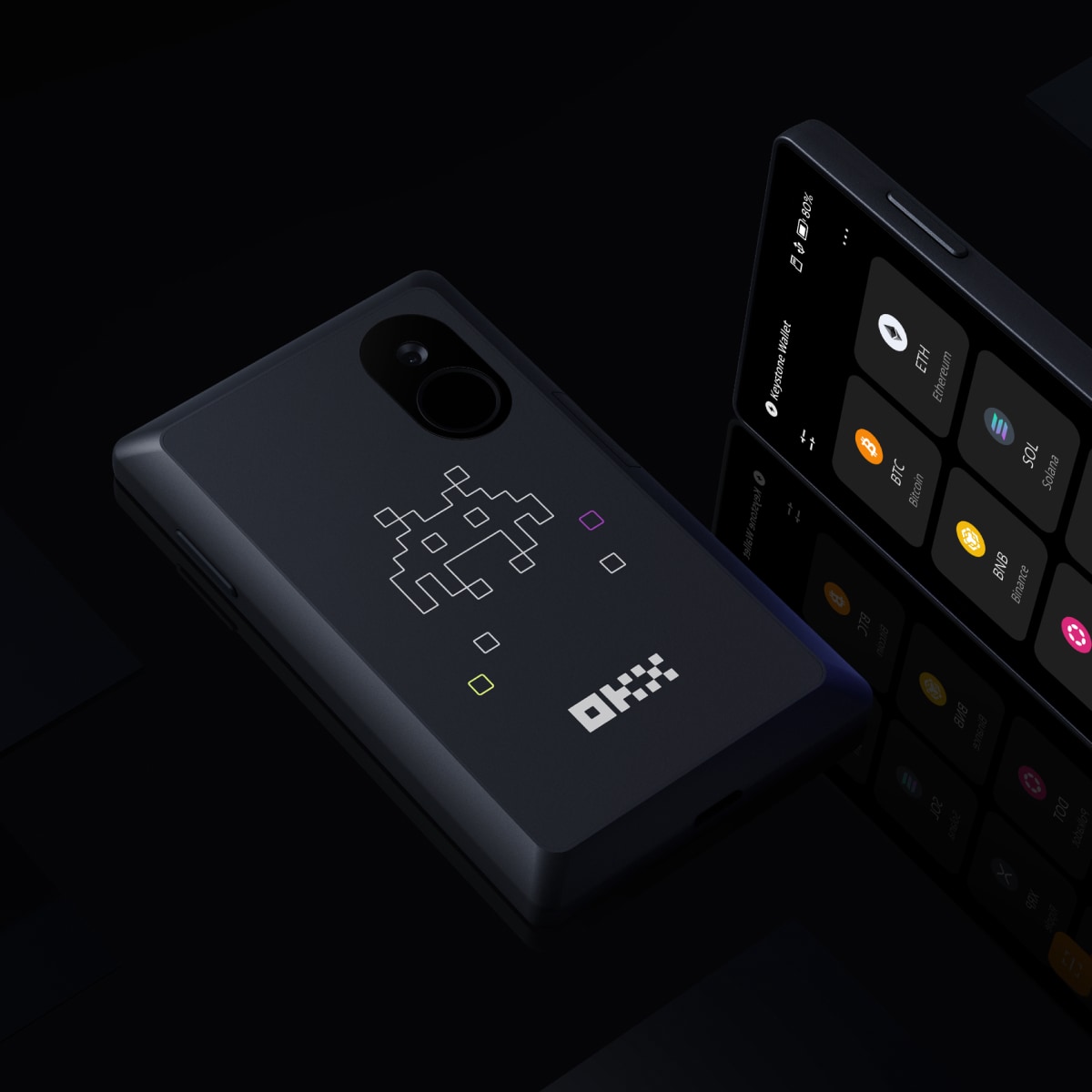
Multi-Chain Enthusiasts: Best suited for OKX Wallet. OKX Wallet supports over 100 blockchain networks, including EVM and non-EVM chains like Bitcoin and Solana, making it perfect for users managing diverse assets across multiple blockchains.
-
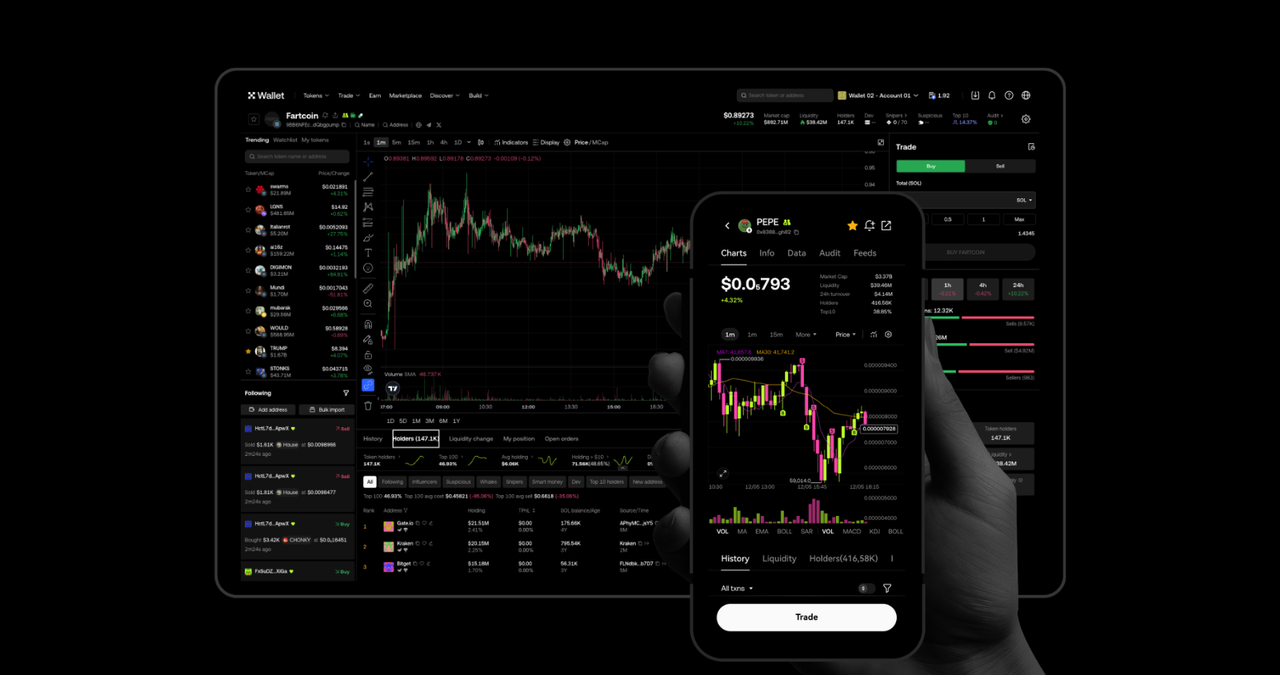
Web3 and DeFi Power Users: Best suited for OKX Wallet. With a built-in DEX aggregator, staking, DeFi yields, and NFT management, OKX Wallet is tailored for users deeply engaged in decentralized finance and Web3 ecosystems.
-
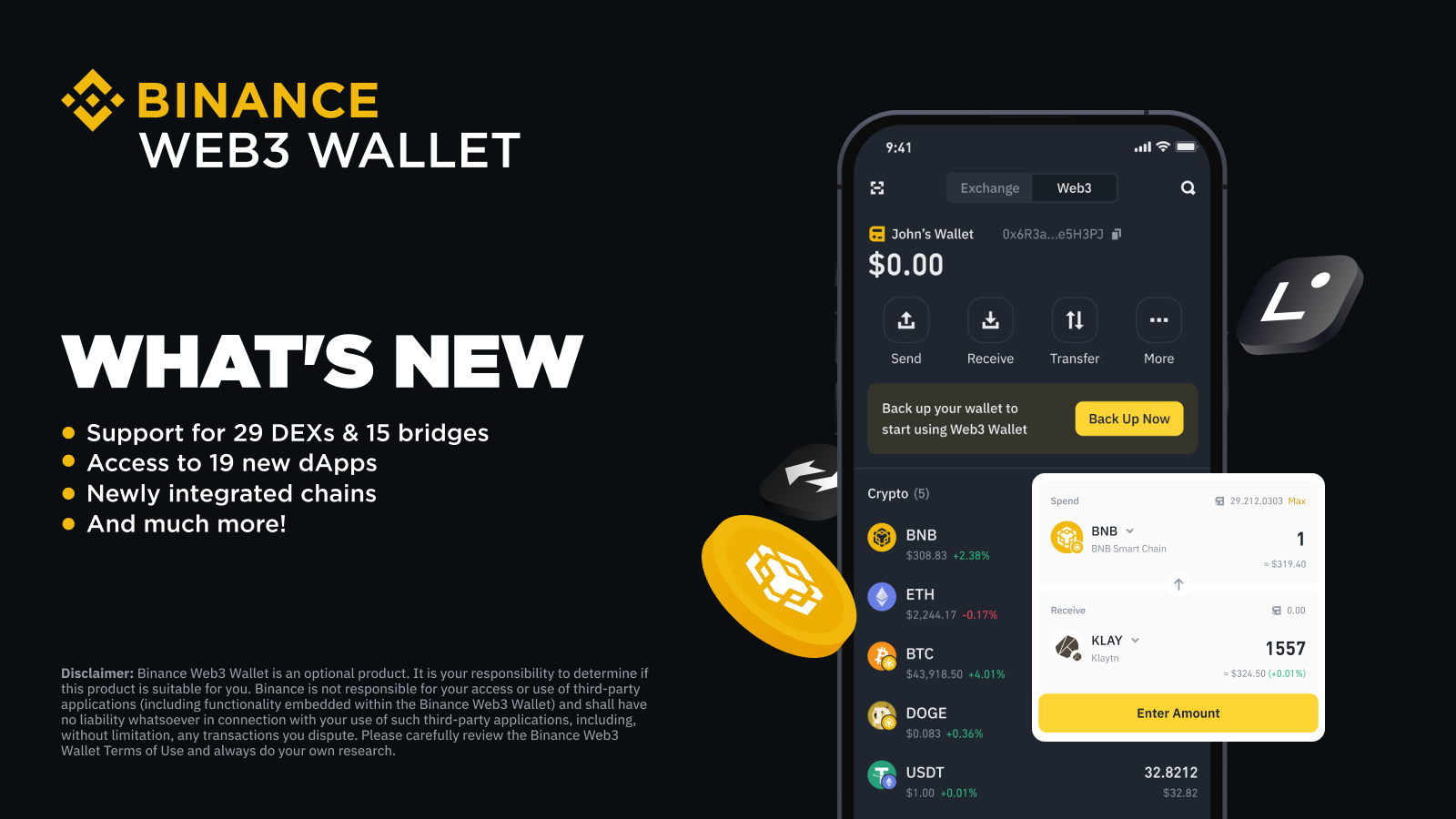
Centralized Exchange (CEX) Traders: Best suited for Binance Wallet. Binance Wallet’s integration with spot trading, derivatives, and NFT marketplace within the Binance ecosystem offers a unified experience for users who frequently use centralized exchange features.
-
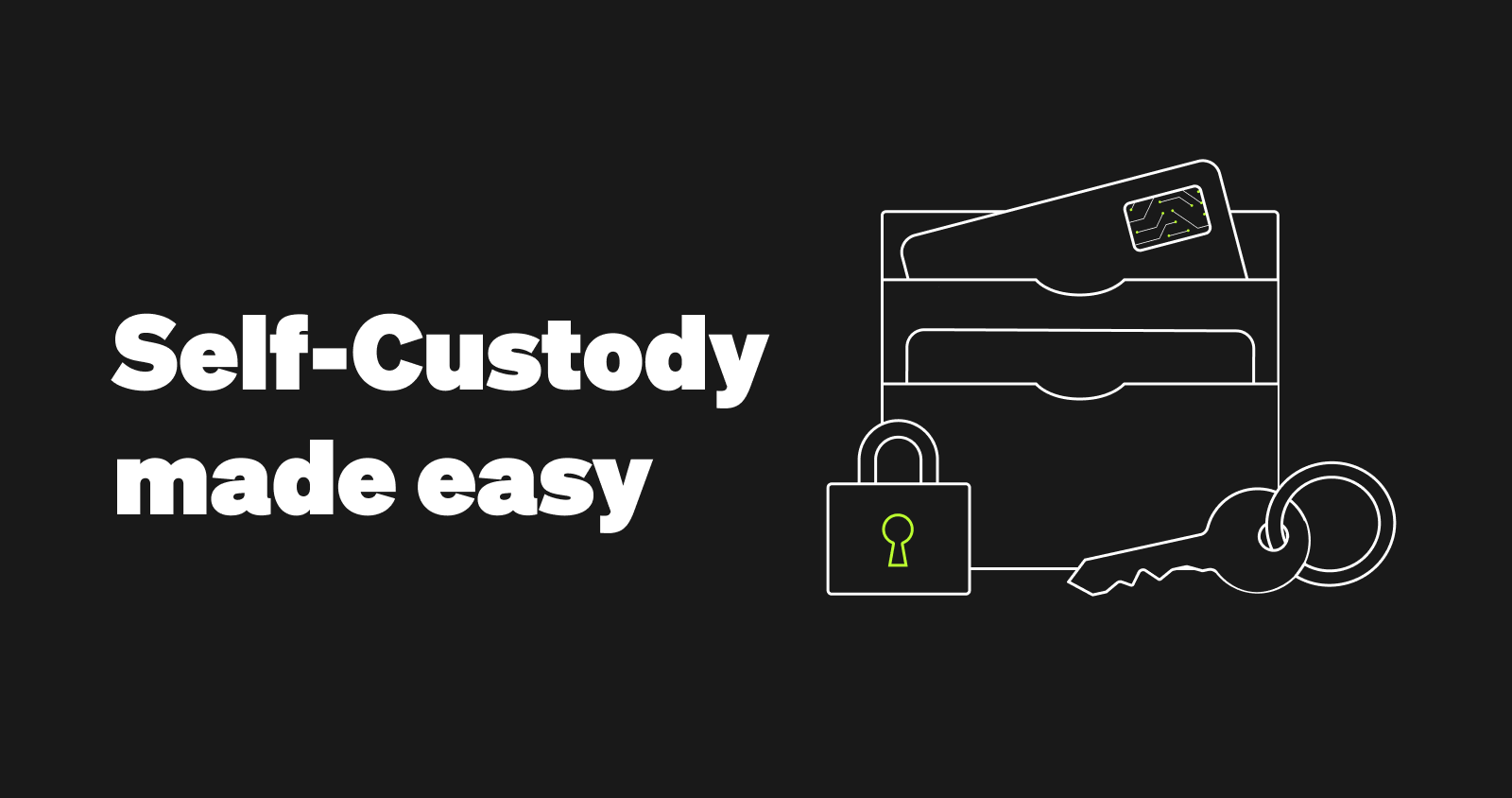
Security-Conscious Users: Best suited for OKX Wallet. OKX Wallet employs Multi-Party Computation (MPC) technology for private key management, providing enhanced security for users prioritizing advanced protection measures.
-
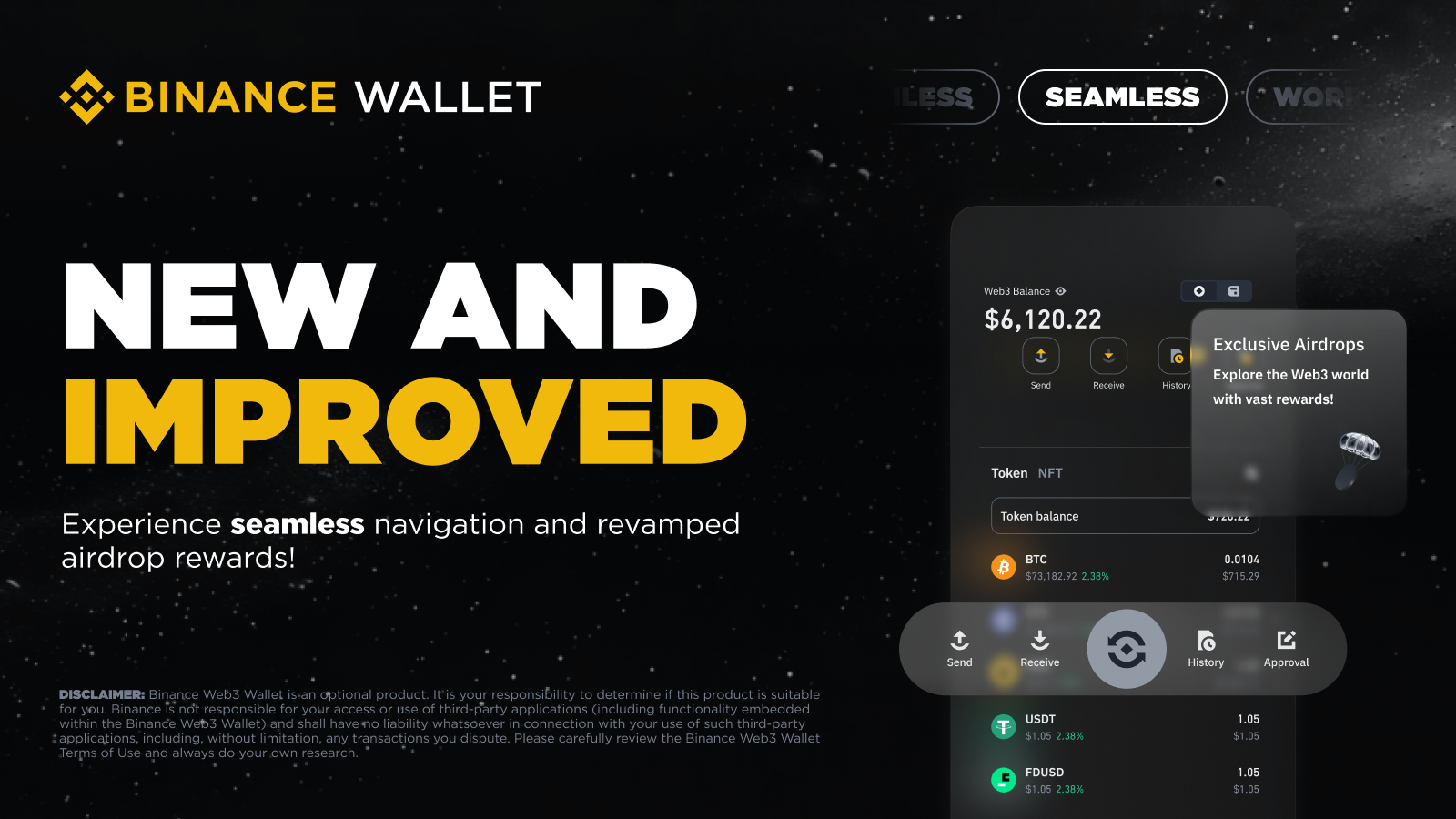
Users Seeking Ecosystem Depth: Best suited for Binance Wallet. Those who want easy access to Binance’s extensive ecosystem—including staking, trading, and NFTs—will benefit from the wallet’s deep integration and broad service offerings.
If you’re a DeFi enthusiast or NFT collector seeking broad chain coverage, OKX Wallet is hard to beat. Its MPC security model offers peace of mind for those managing sizable on-chain holdings. By contrast, if you’re already invested in the Binance ecosystem or want an all-in-one platform that bridges CeFi and DeFi seamlessly, Binance Wallet delivers unrivaled convenience.
Final Thoughts: The State of Crypto Wallets in 2025
The gap between leading wallets continues to narrow as both platforms iterate rapidly. Security innovations like MPC are raising industry standards, while UI/UX improvements are lowering barriers for new adopters worldwide. Ultimately, your decision should align with your risk tolerance, asset diversity needs, and preferred ecosystem touchpoints.
For an even deeper dive into visual layouts, onboarding flows, or to see these wallets side-by-side in action, check out our full comparison at OKX vs Binance Wallet Visual Comparison.
